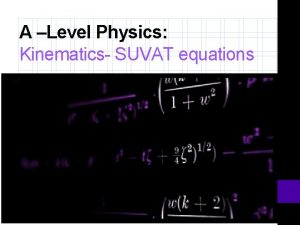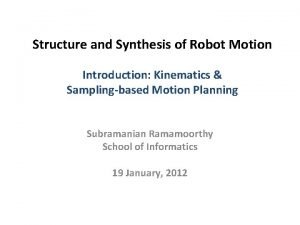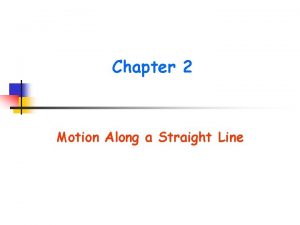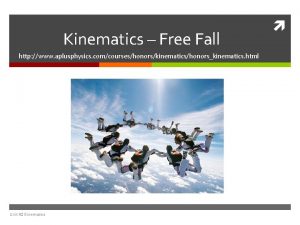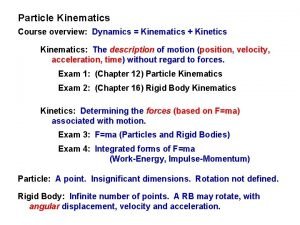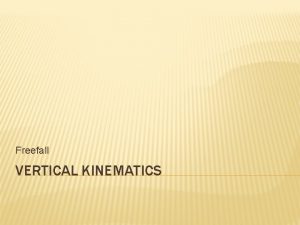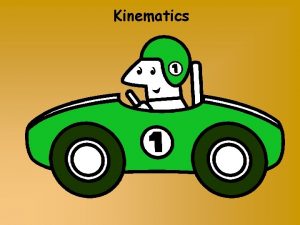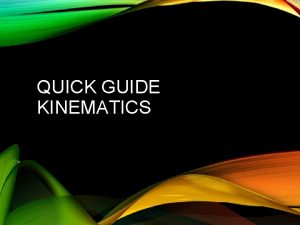KINEMATICS Eric Rupe What are Kinematics Kinematics Is











- Slides: 11

KINEMATICS Eric Rupe

What are Kinematics? Kinematics: Is the application of classical mechanics to describe an object or a group of objects’ motion without taking into account the force in which caused the motion.

Understanding Kinematics Pictorially 2. Graphically 3. Conceptually 4. Mathematically 1. Note: You must be able to apply all four understandings to any one scenario.

Watching an object move across a surface, how can we describe the object? Take in account: 1. Velocity 2. Position 3. Acceleration Physics Game

Velocity vs. Acceleration Velocity- is the amount of distance traveled with respect to time and direction. Acceleration- is the rate at which the velocity is increasing.

Question 1 If your velocity is increasing at a constant rate, your acceleration is…? A. Increasing B. Decreasing C. Remains Constant D. There is no acceleration Process to Identify Kinematic Problems

Kinematic Equations d=vit+1/2 at 2 vf=vi+at Visit Physics Classroom to get a better understanding on how to apply these equations. 2 2 vf =vi +2 ad vf=final velocity vi=initial velocity d=distance t=time a=acceleration

Question 2 A ball is rolled across a floor with the initial velocity of 4 m/s and is decelerating at a rate of 1 m/s 2. How far has the ball traveled after 3 seconds? d=vit+1/2 at 2 d=(4 m/s)(3 s)+1/2(-1)(3 s)2 d=12 -4. 5 d=7. 5 m

Angry Birds The popular game Angry Birds applies many of the concepts we discussed, visit Angry Birds to see how the laws of physics apply to this game. 20 m/s

Credits Angry birds in the physics classroom. (n. d. ). Retrieved from http: //fnoschese. wordpress. com/2011/06/16/angry-birds-in-the-physicsclassroom/ How to recognize kinematic equations in physics. (n. d. ). Retrieved from http: //www. ehow. com/how_2156087_recognize-kinematic-equationsphysics. html Physics classroom. (n. d. ). Retrieved from http: //www. physicsclassroom. com/Class/1 DKin Physics games. (n. d. ). Retrieved from http: //www. physicsgames. net/game/Red_Ball_2. html

Pictures Slide 1: http: //www. flickr. com/search/? z=e&w=all&q=physics+equations&m=text Slide 4: http: //www. flickr. com/search/? z=e&w=all&q=acceleration&m=text Slide 8: http: //w ww. flickr. com/search/? q=rolling+ball&z=e&page=4 Slide 9: http: //www. flickr. com/search/? q=angry+birds&z=e&page=2








